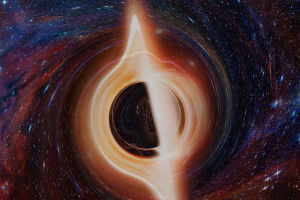Insignificant Presence
Where is our Earth? The starry night sky tells us the answer to this question. On clear nights, when there is less light pollution on the ground, we see a bright band of milky white stretching from the northeast to the southwest of the sky. This is the Milky Way.
The Milky Way is part of the Milky Way galaxy, a vast galaxy in the universe. In addition to the Milky Way, the sky is full of stars that are also part of the Milky Way. This includes the Earth and the Sun. Are the stars in the sky also part of the Milky Way? Why are they not in the Milky Way?
There are about 6,000 stars visible to the vivid eye in the entire sky. Their distance from Earth is basically within 1,100 light years. Since they are relatively close to Earth, these stars appear to be sparsely separated from each other by a long distance.
Except for these stars near Earth, the vast majority of stars in our galaxy are very far away. We cannot distinguish them with our vivid eyes and can only see their dimly lit galaxies of starlight.
The spectacular Milky Way in the night sky is only a part of our galaxy. How big is the Milky Way? The Milky Way is a giant barred spiral galaxy. Scientists estimate the number of stars in the Milky Way to be about 100 to 400 billion.
In the past, the Milky Way was thought to be up to 100,000 light years in diameter. But the latest research suggests that the Milky Way could be 180,000 to 200,000 light-years in diameter!
A light year is a very large unit of distance. One light year is a distance of about 946.07 billion kilometers. It is 63,241 times the average distance from Earth to the Sun. The average speed of SkyQuest 1 flying to Mars is about 27 km/s, which is already very fast.
If we use this speed to travel a distance of one light-year, it will take more than 11,000 years. So, the light-year unit of distance is not used on Earth. It is used by astronomers to measure the distance between celestial bodies in the universe.
The distance of one light year is so large, and the diameter of the Milky Way is 100,000 times as large as one light year, or even larger. The Milky Way is too big for us to imagine. The disk of the Milky Way is more than 100,000 light-years in diameter.
Its thickness is also quite large. The central part of the Milky Way is up to 10,000 light-years thick. The silver disk part of the Milky Way is thinner and has a thickness of 2,000 light-years.
In addition, there is a spherical silver halo structure outside the silver disk of the Milky Way. The silver halo is about 250,000 to 400,000 light-years in diameter. The diameter of the Milky Way we mentioned earlier does not include this part of the halo. If we include the silver halo, the Milky Way is even bigger.
If the Milky Way is so big, what is its place in the universe?
Galaxies are also called cosmic islands. The name is very graphic. Galaxies are very much like islands floating in the center of the universe. The Milky Way is just one of the many islands in the universe. The Milky Way is not small, nor is it very large.
The smallest galaxy that astronomers have observed so far is called "Segue 2". This pocket galaxy is only 900 times the size of our solar system or about 900 to 1,800 light years. The size of Segue 2 is not comparable to that of the Milky Way.
The largest known galaxy is IC 1101, which is about 1,045 million light-years from Earth. Its diameter is approximately 4 million light-years, more than 20 times the diameter of the Milky Way, and it contains about 100 trillion stars. In terms of volume, IC 1101 can hold thousands of galaxies.
We would classify some of the closer islands as an archipelago. The same is true for galaxies in the universe. The Milky Way and its nearby galaxies also form a galaxy group called the Local Group.
This galaxy group contains 50 galaxies, spanning about 10 million light years. Among the galaxies in the group, the Andromeda galaxy is the largest, with a diameter of about 220,000 light-years. The Milky Way galaxy is the second largest.
Can you imagine the place of the Milky Way in the universe? Compared to the vastness of the universe, the Milky Way, with a diameter of 200,000 light years, is just a speck of dust.

